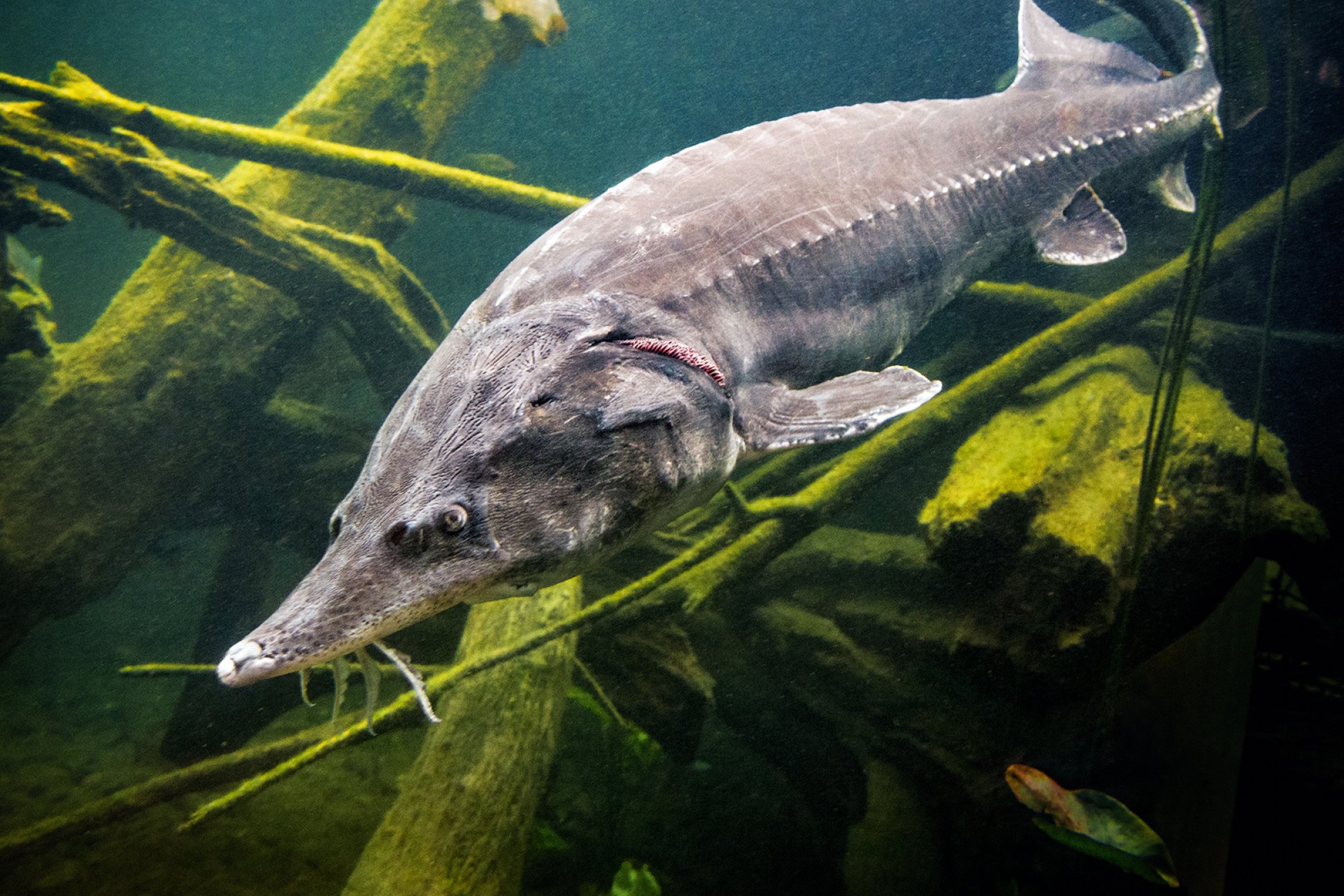Diving with Sturgeons
Oldest and Most Endangered Fish
Archaic giants of the fish world, sturgeon fossils have been found dating back to the Jurassic period. Despite having survived for millions of years, the IUCN has stated that, due to overfishing and habitat loss, they are “more critically endangered than any other group of species.” Sturgeon is the common name encompassing roughly 29 different species of fish in the Acipenseridae family, many of which are famous for the caviar harvested from their eggs. These fishy beasts commonly grow to about 2-3 meters (7-10 feet) in length, with some specimens reaching up to 8 meters (26.2 feet) long! Not only are they one of the largest growing bony fish, they are the longest living as well; capable of reaching 100 years or more.
Diving with sturgeons is like stepping back in time; watching these bony plated ancient fish cruise the cool waters of lakes and rivers is a special experience. They are native to, and in greatest abundance in, freshwater lakes and large rivers of North America and the rivers of southern Russia and Ukraine. They are a migrating animals, some of which live in both fresh and saltwater, swimming from the sea to rivers and lake shores in the early summer months to breed. Some have been known to venture out to the open ocean while others are exclusively freshwater species. If diving with thems is on your bucket list, click on the map below to find the best dive sites where they have been sighted.
Dive Sites with this Animal View more on map

★★★★☆ Hunsfels
Where lime was mined 6 years ago, today a dreamlike lake stretches out. On an area of about five hectares and with depths of up to 54 meters, it currently offers five dive sites everything that makes the diver's heart beat faster. With fantastic visibility, mostly over 10 meters.

★★★★☆ Carriere de la Rochefontaine
It is an old red marble quarry that was exploited until the 1980’s. A oblique plane going down from, 4m to 6m (the height varies according to the seasons), then the quarry is made up of plateaus at depths of 22m, 26m, 36m, 40m, 43m and 52m with steep walls.

★★★★☆ Carrière de Chamagnieu
The site has a 2.5-hectare stretch of water, with depths ranging from 0 to 18 meters, reserved for diving. In addition, an area with a maximum depth of 6 meters has been set aside for safe first dives in the natural environment.

★★★★☆ Carriere de Vodeleé
This dive site is an old marble quarry located in the village of Vodelée, near Philippeville. Pink and gray marble was mined here, and every now and then you can still see some underwater.

★★★★★ Via Sport Diving Marina - Koparki
This well-known and still developing Polish location is located near the A4 motorway between Katowice and Krakow near Jaworzno - Szczakowa. It lies on the site of a former dolomite quarry, still known among the locals known as “Gródek.“

★★★★☆ Gray Quarry
Gray Quarry is a 501-c3 non-profit organization that seeks to promote the sport of scuba diving by providing a safe family-friendly fun environment for recreational scuba diving and training. All money from dive entry fees goes to maintaining the quarry and making dive site improvements.
